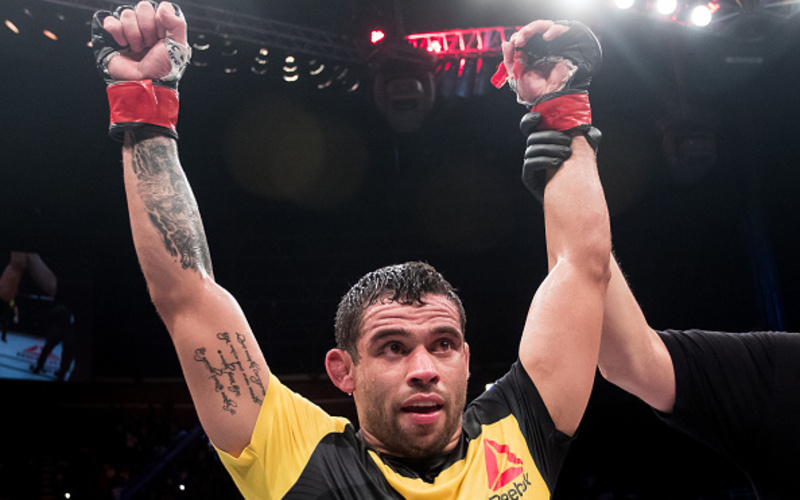On the 24th of May, 2014, Renan Barao entered the Octagon as the UFC bantamweight champion of the world.
For a good half of the decade, Barao stood firmly on top of the mixed martial arts mountain. He was on a thirty-two-fight unbeaten streak and had already defended the title three times. At twenty-seven years of age, Barao was constantly in the mix for pound-for-pound greatest fighter of all time.
Facing the Brazilian was T.J Dillashaw, runner-up on the 14th installment of The Ultimate Fighter. Dillashaw wasn’t even the first choice to face Barao. Raphael Assunção was the original pick, but hadn’t fully recovered from a rib injury.
Outclassed
On fight night, after having been rocked near the end of the first round with a looping right hand, Barao was subsequently taken apart systematically over the remainder of the fight. Dillashaw had put on a masterclass in what was arguably the greatest display of technical dominance in MMA, and Barao looked like a volunteer in his instructional video.
The MMA gods were cruel in granting Barao confidence after he subsequently went on to beat Mitch Gagnon in a “pick-me-up” fight. The win seemingly entrenched in him the idea that the outcome against Dillashaw was the result of a “fluke” looping right hand.
Barao amazingly turned up for the rematch – making zero adjustments to his game. His performance more one dimensional than before – it was clear to those watching that MMA had evolved and Renan Barao hadn’t.
The “Baron” had now become a supporting act in Dillashaw’s story arc. His involvement in both bouts now serves as a negative demonstration to fighters everywhere. His achievements now mentioned only as a tool to prop-up Dillashaw’s own. Where could he go from here?
Weight Cutting Issues
For a while it seemed like the answer was to move up a weight class. But after a two-fight run at featherweight yielded mixed results, Barao returns to the 135-pound division only to find his homecoming bout will be taking place at a catch weight of 140-pounds.
The California State Athletic Commission (CSAC) has refused to allow Barao to cut down to 135 as a result of his weight cutting misadventure at UFC 177. In an attempt to make weight for his first scheduled rematch against Dillashaw, Barao had fainted in the bathtub and knocked his head resulting with him pulling out of the fight.
A fight at 140 pounds provides him a slight reprieve but he will eventually have to make the cut, one which will only get more brutal with age.
Gatekeeper Status
His struggles with the scale only puts his ability to perform at bantamweight further into question. Which is a sentiment that Barao’s opponent at UFC 214, Aljamain Sterling, agrees with. Sterling posted his thoughts on Instagram, writing that the commission was making the weight cut easy for Barao and had initially refused to take the fight at catch weight, but later relented.
For Sterling, who is trying to prove himself as a future title contender in the division, Barao plays the role of a gatekeeper. And should Barao turn up on fight night with no visible improvement in his game, a win over Sterling would only cement that.
The competition at the top of the division is operating on a different level, one which Barao has failed to match previously against Dillashaw and has showed little signs of ever doing. It might sound harsh but so is the nature of the fight game.
Legacy
Barao is living proof of how quickly this beautiful sport can turn on you. Overstay your welcome even a little and the damage to your legacy could be irreparable.
From undefeated streaks and championship reigns to unbeatable opponents and life-threatening weight cuts, Barao’s career is starting to read like a Greek tragedy.
Featured Image:



